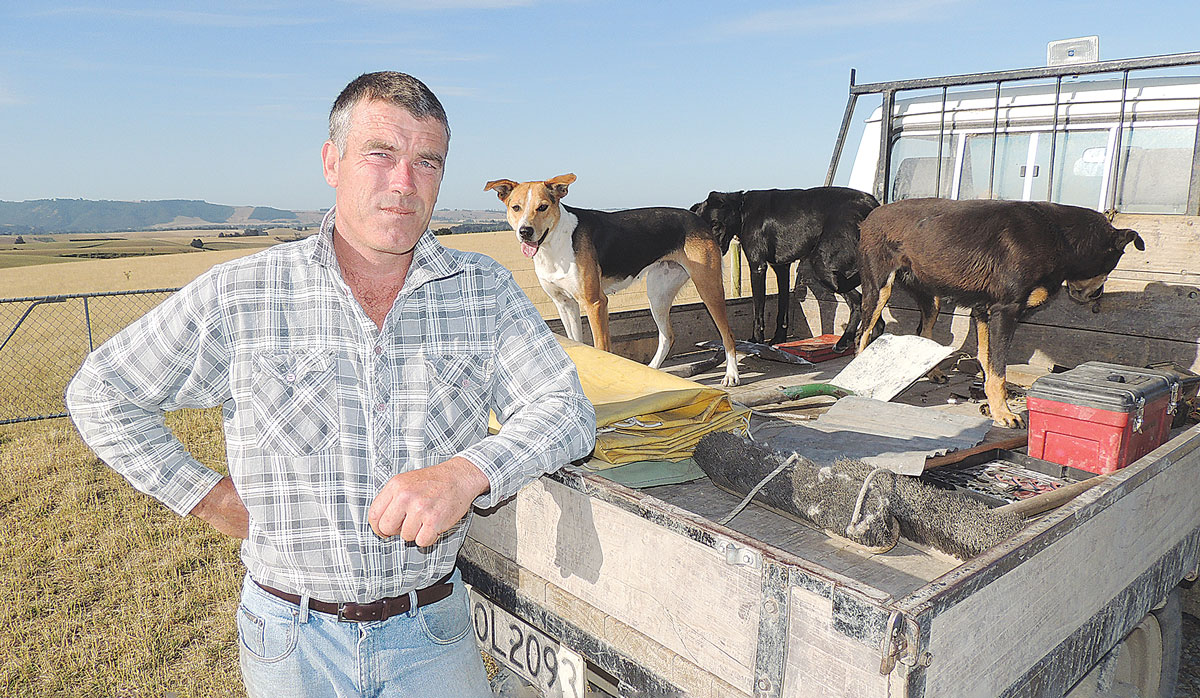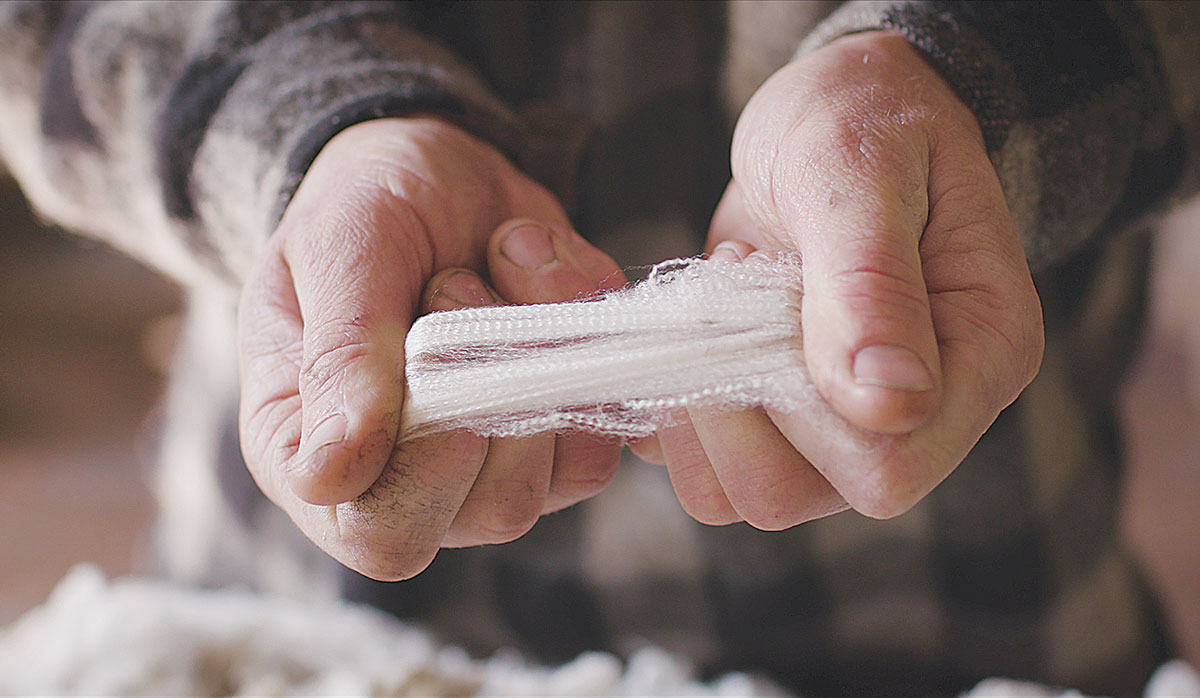Top wool advocate bales out
The conversion of productive farmland into trees has pretty much annihilated the wool industry.
A question many strong wool growers have heard is why, for all its strengths and the push for wool products, is wool considered almost worthless? There is one big flaw in that question: wool isn’t almost worthless, it is an active drain on farmers’ businesses. Leo Argent looks at how the strong wool industry came to be where it is today and whether it can make a comeback.
In 1951 the US was purchasing large amounts of wool to shore up its strategic stockpiles during the Korean War.
New Zealand wool tripled in value overnight, and even by 1966 when prices had dropped 40% there was still lots of money to be found in wool. A heavily statemanaged economy and minimum price controls managed by the Wool Board meant there was little incentive to diversify.
our dominant trading partner – joined the EEC (now EU) and reduced economic ties with New Zealand. Our predominantly sheep and beef based economy took a serious hit. Economic growth was slow, inflation and unemployment soared. Synthetic fibres for clothing and carpeting were becoming cheaper and more popular internationally, reducing demand for wool.
 |
|---|
|
Wools NZ chief executive John McWhirter says what people say and do can be very different |
In 1984 a Labour government was elected and over the next six years enacted a series of economic liberalisations, reducing state control of the economy, dropping many agricultural subsidies and reducing import tariffs. Previously insulated from declining prices, wool farmers were suddenly confronted with a market in which their product was not valued or wanted.
From 34.8 million sheep in 1951, the industry continued to grow, reaching a peak of 70.3 million in 1982. Ever since the numbers have continued to fall; latest Statista information lists New Zealand’s sheep population at 25.1m in 2022.
Auction prices for wool have kept falling in raw dollar value since the 1960s, a poor omen even before factoring in inflation. Dealers took to blending different grades of wool together to make a profit. However, the resulting poor-quality yarns drove many suppliers away from using wool, seeing it as unreliable, further hurting wools’ value compared to the lab-grown precision micron count that synthetics offered.
Without government support, wool growers established their own industry bodies such as Wools NZ with the aim to provide independence and support for wool growers, establish links to suppliers and drive innovations in the industry.
Although these bodies do much to ensure wool isn’t adulterated in New Zealand, they cannot ensure that wool isn’t adulterated overseas – a problem Ken Algie of AgWool NZ calls “obscene”.
 |
|---|
|
Former Fed Farmers meat and wool chair Miles Anderson believes that there are lights on the horizon for strong wool, but they need to come quickly. |
“Our wools got lost. Suddenly we don’t have control over the market anymore, the international people do. That’s a major problem,” he told Rural News.
In the last decade there have been many solutions proposed to bring wool out of its economic slump, with traditional products like clothing and carpets contrasted with more experimental options like surfboard material and even filters for NASA life support systems.
With environmental awareness becoming a bigger issue as climate change effects become more pressing, wool’s eco-friendly credentials should give it a distinct advantage over synthetics. Many polls show people are willing to pay more for an environmentally friendly product.
However, as Wools NZ chief executive John McWhirter points out: what people say and do can be very different.
“What market research tells you can only be a guide. People might tell you they want to do the right thing, but they won’t necessarily do that,” he says.
“When I was CEO for Hellers, I was in an Auckland Pak N Save and a lady came up and asked to buy free range bacon, explaining how important it was to her. I showed her some imported Hellers bacon and some bacon from North Canterbury with the pigs roaming around,” McWhirter told Rural News.
“She said, ‘that’s the bacon I want’, looked at the price, which was about $8, and she looked at the Hellers bacon which was about $5. She took the Hellers bacon. People’s disposable income will dictate their final decision, which is why we have to make wool [products] affordable.”
 |
|---|
|
Auction prices for wool have kept falling in new dollar value since the 1960s. |
Another consistently reported problem was New Zealand’s lack of manufacturing base. Most products using NZ wool have to be manufactured overseas. For example, while Agwool NZ manufactures it's garments here in NZ, the company scours and spins its wool into yarn in NZ, sending it to Australia to manufacture into carpets and underlay before it is returned to NZ for sale.
McWhirter estimates domestic manufacturing capacity of about 5%.
“There’s no industry or expertise here anymore,” Alge admits. “When you talk to people about what you can make, there’s not much understanding of that.”
Former Federated Farmers wool chair Miles Anderson says that for all the possibilities for strong wool, unless huge volumes are used, it won’t have any impact on the price farmers get or put pressure on other buyers to put their prices up.
“In general, with niche products utilising or going into new technologies, that products, buyers are getting it directly from the suppliers and the price is not being reflected for the farmers,” he told Rural News.
Volume is a key factor here. McWhirter estimates that each year there is an oversupply of 45-50,000 bales of strong wool above market demand, pushing prices down. He believes creating new and old products to soak up the excess wool will help bring prices back up.
“If you think about your car market, how many Audis would be sold in New Zealand versus Corollas? For the wool carpet market, we need to be Corollas, where the volume is.”
All admirable goals, but the strain on farmers is a challenge to hold out.
“We were saying to a farmer: ‘you’ve got to class your wool’ but you’re paying half its value, so why would he do that?” asks Alge.
“The answer is, if he doesn’t, it just drops further down the hole, but he’s losing money every time he does. Some of these guys have been doing this for years. One guy got $8,000 for his wool, which cost $17,000 to shear. They’re losing faith.”
On the projected future for strong wool, Anderson believes that there are lights on the horizon. “I’m just worried it may not come quick enough for the industry as a whole.”
Applications are now open for the 2026 NZI Rural Women Business Awards, set to be held at Parliament on 23 July.
Ravensdown has announced a collaboration with Kiwi icon, Footrot Flats in an effort to bring humour, heart, and connection to the forefront of the farming sector.
Forest & Bird's Kiwi Conservation Club is inviting New Zealanders of all ages to embrace the outdoors with its Summer Adventure Challenges.
Grace Su, a recent optometry graduate from the University of Auckland, is moving to Tauranga to start work in a practice where she worked while participating in the university's Rural Health Interprofessional Programme (RHIP).
Two farmers and two farming companies were recently convicted and fined a total of $108,000 for environmental offending.
According to Ravensdown's most recent Market Outlook report, a combination of geopolitical movements and volatile market responses are impacting the global fertiliser landscape.

OPINION: The release of the Natural Environment Bill and Planning Bill to replace the Resource Management Act is a red-letter day…
OPINION: Federated Farmers has launched a new campaign, swapping ‘The Twelve Days of Christmas’ for ‘The Twelve Pests of Christmas’ to…